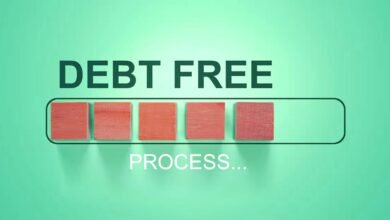Bad Faith Insurance Law: Navigating the Legal Landscape

In a world where insurance is meant to provide a safety net, instances of bad-faith insurance practices can turn an already stressful situation into a legal battleground. Understanding bad faith insurance law is crucial for both policyholders and insurers. In this comprehensive guide, we’ll delve into the intricacies of bad faith insurance, its signs, legal implications, and how you can protect yourself.
Understanding Bad Faith Insurance
Types of Insurance Claims
Insurance claims can range from property damage to personal injury. Recognizing bad faith requires an understanding of the duties insurers owe their policyholders in various claim scenarios.
Duties of Good Faith and Fair Dealing
At the core of bad faith insurance law lies the concept of good faith and fair dealing. Insurance companies are obligated to handle claims promptly, fairly, and honestly. This duty extends to investigating claims thoroughly and providing a reasonable settlement.
Signs of Bad Faith Insurance Practices
Unreasonable Delays in Claim Processing
One red flag for bad faith is the unjustified delay in processing a claim. We’ll explore how prolonged waiting times can indicate a breach of the insurer’s duty.
Inadequate Investigation
A cursory investigation that neglects crucial evidence can signal bad faith. We’ll discuss how insurers’ failure to gather pertinent information undermines the policyholder’s rights.
Offering Low Settlements
Unreasonably low settlement offers can be another indicator of bad faith. We’ll examine the factors that contribute to such offers and how policyholders can respond.
Legal Implications for Bad Faith
Breach of Contract Claims
When an insurance company fails to fulfill its contractual obligations, policyholders may pursue breach of contract claims. We’ll analyze the elements required to establish this claim.
Tort Claims
In some cases, bad faith insurance practices can lead to tort claims, seeking compensation beyond the policy limits. We’ll explore the legal grounds for such claims.
How to Protect Yourself
Documenting the Claim Process
Proper documentation is a powerful tool in the fight against bad faith. We’ll provide practical tips on documenting the claims process to strengthen your case.
Seeking Legal Advice
Navigating bad-faith insurance claims can be complex. We’ll discuss the importance of seeking legal advice to understand your rights and options.
Recent Developments in Bad Faith Insurance Law
Landmark Cases
Examining recent legal precedents can shed light on evolving interpretations of bad faith insurance law. We’ll highlight landmark cases that have shaped the legal landscape.
Legislative Changes
Changes in legislation can have a significant impact on bad faith claims. We’ll explore recent legislative developments and their implications for policyholders.
Read More: How To Pack The Best Single Trip Travel Insurance
Challenges in Proving Bad Faith
Burden of Proof
Proving bad faith requires meeting a specific burden of proof. We’ll outline the challenges involved and strategies to overcome them.
Expert Testimonies
Expert testimonies can play a crucial role in establishing bad faith. We’ll discuss how professionals in the industry can contribute to your case.
Impact on Insurance Industry
Repercussions for Insurers
The consequences of bad faith extend beyond individual claims. We’ll examine how insurers may face financial and reputational repercussions.
Consumer Advocacy
Understanding bad faith empowers consumers to advocate for fair treatment. We’ll explore how increased awareness can lead to positive changes in the industry.
The Role of Regulatory Bodies
State Insurance Departments
Regulatory bodies at the state level play a vital role in overseeing insurance practices. We’ll discuss how state insurance departments contribute to enforcing fair treatment.
National Association of Insurance Commissioners (NAIC)
The NAIC sets industry standards and guidelines. We’ll explore its role in shaping policies and practices to prevent bad faith.
Case Studies
Real-life Examples of Bad Faith Insurance Cases
Examining actual cases provides insights into the complexities of bad faith claims. We’ll analyze real-life examples to illustrate key points.
Legal Recourse for Victims
Filing a Lawsuit
Victims of bad-faith insurance practices may seek legal recourse through lawsuits. We’ll guide you through the steps involved in filing a lawsuit.
Recoverable Damages
Understanding the types of damages you can recover is essential. We’ll outline the potential financial compensation available to victims.
Insurance Companies’ Defense Strategies
Common Arguments
Insurance companies have specific defense strategies. We’ll explore common arguments they may present to counter bad-faith claims.
Counterclaims
In some cases, insurers may file counterclaims against policyholders. We’ll examine the potential counterarguments policyholders may face.
Mediation and Arbitration
Alternative Dispute Resolution
Mediation and arbitration offer alternatives to traditional litigation. We’ll discuss the pros and cons of these methods for resolving bad-faith disputes.
Tips for Choosing an Insurance Provider
Researching Company Reputation
Selecting a reputable insurance provider is crucial. We’ll provide tips on researching and evaluating an insurance company’s reputation.
Reading Policy Terms Carefully
Understanding the fine print is essential. We’ll guide you through key policy terms to ensure you’re aware of your rights and obligations.
Conclusion
Navigating the complexities of bad faith insurance law requires vigilance and understanding. By recognizing the signs, documenting your claim, and seeking legal advice when needed, you can protect yourself from unfair practices. The evolving legal landscape and increased consumer awareness contribute to a more equitable insurance industry.
If you found this guide helpful, please click the Like button to rate your experience!
FAQs
- What is bad-faith insurance?
- Bad faith insurance refers to dishonest or unfair practices by insurance companies in handling claims, violating their duty of good faith and fair dealing.
- How can I prove bad faith in an insurance claim?
- Proving bad faith often involves demonstrating unreasonable delays, inadequate investigations, or low settlement offers. Documentation and legal advice are crucial.
- What damages can I recover in a bad-faith insurance lawsuit?
- Victims may recover various damages, including compensatory and punitive damages, depending on the circumstances of the case.
- Can bad-faith insurance cases be resolved through mediation?
- Yes, mediation is an alternative dispute resolution method that can be employed to settle bad-faith insurance disputes.
- Is there a regulatory body overseeing insurance practices?
- State insurance departments and the National Association of Insurance Commissioners (NAIC) play roles in regulating and overseeing insurance practices.











